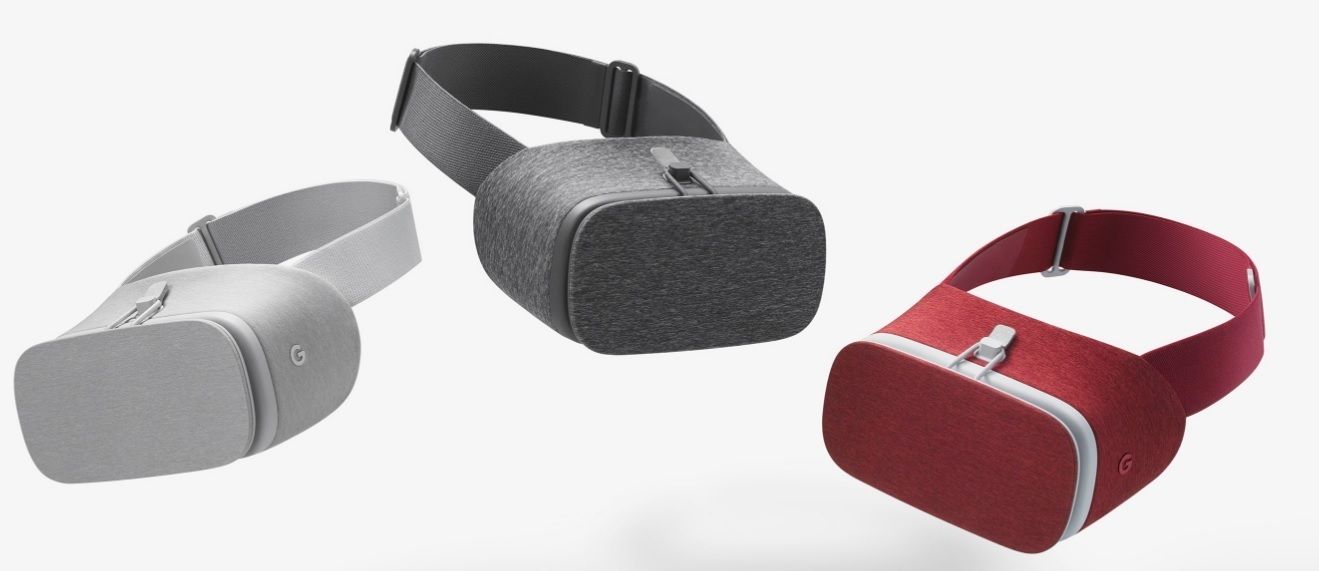Review: Google's Daydream View, The Most Immerse Mobile-based VR Headset Today
Google's Daydream View virtual reality headset arrived this month, with a big splash.
The headsetonly works with the latest Android Nougat smartphones which, right now, are only the Google Pixel and Pixel XL, and the Lenovo Moto Z and Moto Z Force. But as more phones hit the market with the latest version of Android, smartphone options that work with Daydream View will increase dramatically, as the virtual reality platform is built right into the core of Nougat.
Daydream View headset is currently only available from Google itself. But the standard is open, which means that other manufacturers can jump on board. Many have already said that they're working compatible viewers.
Why get it?
Daydream View the most immersive mobile-based virtual reality headset available, costs just $79—and comes free with the Pixel phones—and has the best controller of any of mobile headsets.
To get better VR, you'd have to either invest in a PlayStation VR headset, which is about $400, or go up to an Oculus Rift or HTC Vive, which will run at over $800—plus the cost of the new computer you'll need to run them.
I just got mine on Saturday, and love it. All my other headsets are officially mothballed.
First, it works. You download the Daydream app, put the phone in the headset, and off you go. No configuration necessary. There is a virtual reality interface that lets you play the apps you already have, or download new ones, and the controller makes the interface actually usable. You don't need to keep opening the headset, taking out the phone, and opening new apps or videos each time you want to do something else.
The headset comes with a few killer apps, including the virtual reality versions of YouTube and Google Street View and the YouVisit virtual travel app. There's also Hulu and VR apps from the New York Times, CNN, USA Today, and the Wall Street Journal.
Free games include the Harry Potter-themed hidden object game Fantastic Beasts, a charming theme park game called Wonderglade, the flying game PolyRunner VR, the fantasy-themed adventure game Twilight Pioneers, and the racing game VR Karts: Sprint.
I had the best games and experiences when I stood still, looked around, and waved my controller. Twilight Pioneers, PolyRunner and VR Karts all had in-game motion, which made me queasy. I strongly recommend that you stop playing the games immediately if you notice a problem. You might get used to it over time, but the trick is to take it in small doses. I tried to power through the motion sickness and all it did was make it worse, and the hangover from VR Karts lasted a couple of hours.
There are also a bunch of games you can buy, including Mekorama VR, Hunters Gate, The Arcslinger, and Keep Talking & Nobody Explodes.
That doesn't sound like a particularly large selection, but Google promises that a lot more apps are coming. In addition, I was also able to play my favorite Google Cardboard apps on the Daydream View headset as well, including Cmoar Roller Coaster VR and Minos Starfighter VR, both of which looked way better than they ever did in my Cardboard headsets—though that could also be because I'm now playing them on a better phone.
The Cardboard apps don't load as easily, however. You have to start the app, and put the phone in the headset. You might also need to close the Daydream app and restart the Cardboard app to get it running, since placing the phone in the Daydream headset makes the device want to switch to the Daydream environment. The Cardboard apps also don't support the new controller.
Hopefully, both of those issues will be fixed by the time you read this, or in the near future, since that would allow for easier use of the thousands of Cardboard-compatible apps already in the Google app store.
Speaking of the Daydream controller, this is probably the best feature of the new platform.
The tiny device fits comfortably in your hand, and can be stored inside the headset. Volume buttons sit on the site, a big circular trackpad is on top that also doubles as a button, and two more buttons are in the middle: a back button, and a home button. The controller also has a built-in motion tracker, which can double as a magic wand, a sword or as a golf club or as a pointer.
You can try out the golf club in one of the games in the Wonderglade app, the wand in Fantastic Beasts, and the sword in Twilight Pioneers. The controller is also used very effectively as a laser pointer to help with navigation throughout the Daydream platform.
If you are interested in virtual reality, and are about to buy a new smartphone, I strongly urge you to pick one of the new models that support Daydream, or wait a little bit until more smartphones that run on Nougat are available.
